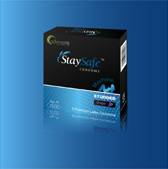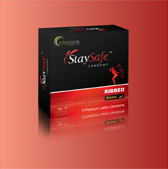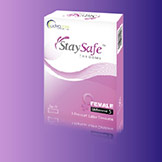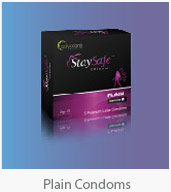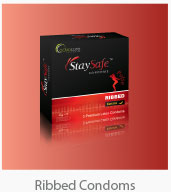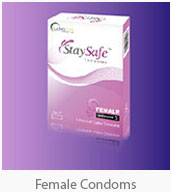

HIV/AIDS 101: What You Need to Know About this Killer Disease
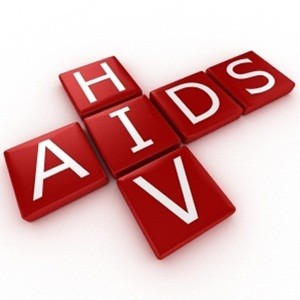
About HIV
HIV disease is caused by HIV (human immunedeficiency virus) that can eventually lead to acquired immunodeficiency syndrome, or AIDS. HIV is not like any other virus that can be gotten rid of; hence, having been infected by it once makes it burden for your entire life.
Currently, no safe and effective cure is discovered. Scientists are putting all their best to find one and are hopeful. HIV may not be treatable but with proper medical care, it can be controlled. Such treatment procedure is often called antiretroviral therapy or ART. It can prolong the life of those infected by the disease and reduce the chance of infecting others. People with HIV could progress to AIDS in just a few years before the introduction of ART in the mid-1990s. Those treated before were able to savor a nearly normal life expectancy.
Origins
It is believed that HIV originated from a type of chimpanzee in Central Africa. Scientist believe that the virus (simian immunodeficiency virus or SIV) found in these primates were most likely transmitted to humans when man consumed chimpanzee meat and came into contact with their infected blood. According to studies, HIV may have jumped from apes to humans’ way back as the late 1800s. The virus gradually spread across Africa and later into other parts of the world.
Stages of HIV
HIV is a serious condition that should be taken seriously. When one gets infected by it and did not seek medication, they may progress through three stages of the disease. Antiviral therapy (ART), the medicine known to treat the said disease helps people of all stages if taken the right way, on a daily basis. The medication can slow down or prevent progression from stage one to succeeding stage. It can also dramatically mitigate the chance of having the transmitted to somebody else.
STAGE 1: Acute HIV Infection
People infected may experience a flu-like condition, which may last for a few weeks, within 2-4 weeks after being infected by HIV. Having such response is natural for the body. Those who have acute HIV infection have a large amount of virus in their blood and are very contagious. On the contrary, those who have acute infection are often unaware that the virus in them is not making them feel sick right away or at all. In order to find out if one has acute infection, wither a fourth-generation antibody/antigen test or a nucleic acid (NAT) test is necessary. It is highly advised that if one had been exposed to HIV through sex or drug use and have flu-like symptoms to seek medical care and ask for a test to diagnose acute infection.
STAGE 2: Clinical Latency (HIV inactivity or dormancy)
Sometimes referred to as asymptomatic HIV infection or chronic HIV infection, HIV is still active but keeps producing at very low levels. This time, people may not have any symptoms or getting sick. This period can last a decade or longer to people who aren’t taking medicines to treat HIV, but some may progress through this phase faster. People who are taking medication to treat HIV (ART) the right way every day may be in this stage for several decades. Note that at this stage, people can still transmit HIV to others.
STAGE 3: AIDS (Acquired Immunodeficiency Syndrome)
HIV infection is at its peak when one has been diagnosed with AIDS (Acquired Immunodeficiency Syndrome). People with AIDS have such badly damaged immune systems that get an increasing number of severe illness, called opportunistic illness.
People having AIDS typically survive about three years without having treatment. Symptoms of AIDS include chills, fever, sweat, swollen lymph glands, weakness and weight loss. Those who are diagnosed with AIDS when their CD4 cell count dips below 200 cells/mm3 or if they develop certain opportunistic illnesses or conditions. Since this is the most severe stage of HIV, AIDS-infected people can have a high viral load and are very infectious.
Diagnosis
The surest way of knowing if one is carrying HIV is to get tested. Knowing your health status is important as it helps you become more cautious in preventing getting or transmitting HIV.
Some may experience a flu-like condition within 2-4 weeks after infection (Stage 1 HIV infection). But some may not even feel that they’re actually sick. These symptoms include fever, chills, rash, night sweats, muscle aches, sore throat, fatigue, swollen lymph nodes or mouth ulcers. They can last anywhere from a few days to several weeks. HIV infection may not show up on an HIV test during these times, but people who have it are infectious and can spread the infections to others.
Having these symptoms does not mean you have HIV. They probably are caused by other illnesses. But having these symptoms after a potential exposure to HIV, it is strongly advised to seek a health care provider and inform them about your risk.
You may also opt to do the test at home using an HIV test kit. It is a must to talk to a health care provider about treatment options after knowing your test results if you’re HIV-positive or learn ways of avoiding this disease if you’re HIV-negative.
Treatment
At present, no effective cure exists for HIV. Although HIV is an infectious, disease, it is controllable. Treatment for HIV is called antiretroviral therapy or ART. ART can help prolong the lives of many people infected by HIV, keeping them healthy and even greatly lower their chances of infecting others. Prior to the introduction of ART in the mid-1990s, people infected with HIV could worsen to AIDS in a few years. Currently, those who are diagnosed with HIV and treated before the disease is far advanced can live nearly as long as someone who does not have the disease.
The Usage of Condoms in the Prevention of HIV/AIDS
Condoms prevent transmission by mitigating the risk than an exposure to HIV or STIs that might be caught during sexual intercourse. Materials like latex, nitrile, polyurethane and polyisoprene used to make most condoms does not permit bacteria, viruses or other germs to pass through them; acting as a blockage to viruses or other germs to pass through them. Condoms act as a barrier to HIV and STI infection by preventing the mouth, penis, vagina and rectum from being exposed to bodily fluids (semen, vaginal and rectal fluids) that can contain HIV and STIs and skin infections by an STI (herpes and syphilis sores or genital warts)
Condoms are very effective in the prevention of HIV/AIDS when consistently and correctly used. They are also a cheap form of prevention of HIV/AIDS, more readily available, and is less toxic than any other medical methods. Condoms when used incorrectly can compromise its effectiveness, thereby increasing the risk of transmitting HIV and STI, even when they are used consistently.
If not correctly used, then the risk of having HIV or STIs increases. On the other hand, when correctly used, it is virtually gives 100% protection against HIV because an exposure cannot occur. It also reduces the risk of other STIs, such as gonorrhea, chlamydia, herpes, and syphilis.
About Us
StaySafe Condoms offer affordable and best quality condoms that will surely be a good protection against HIV/AIDS. For more info about this product, click here.
R.Lavares
StaySafe PRODUCT RANGE
©2014 StaySafe Condoms. All rights reserved.
Click here to read our Privacy Policy or Contact Us for more information.

